Watermelon (Citrullus lanatus) is a flowering plant of the family Cucurbitaceae and is named after its edible fruit. Understanding the stages of development that Watermelon goes through can help improve your farm. Many agricultural factors can affect Watermelon production, under the control of many growers, given the growing system, weather, and soil conditions. To make a profit, the farmer must get a good yield of high-quality melons. High yields of quality melons can only be achieved with care. Let’s check out the important steps to boost Watermelon yield below.
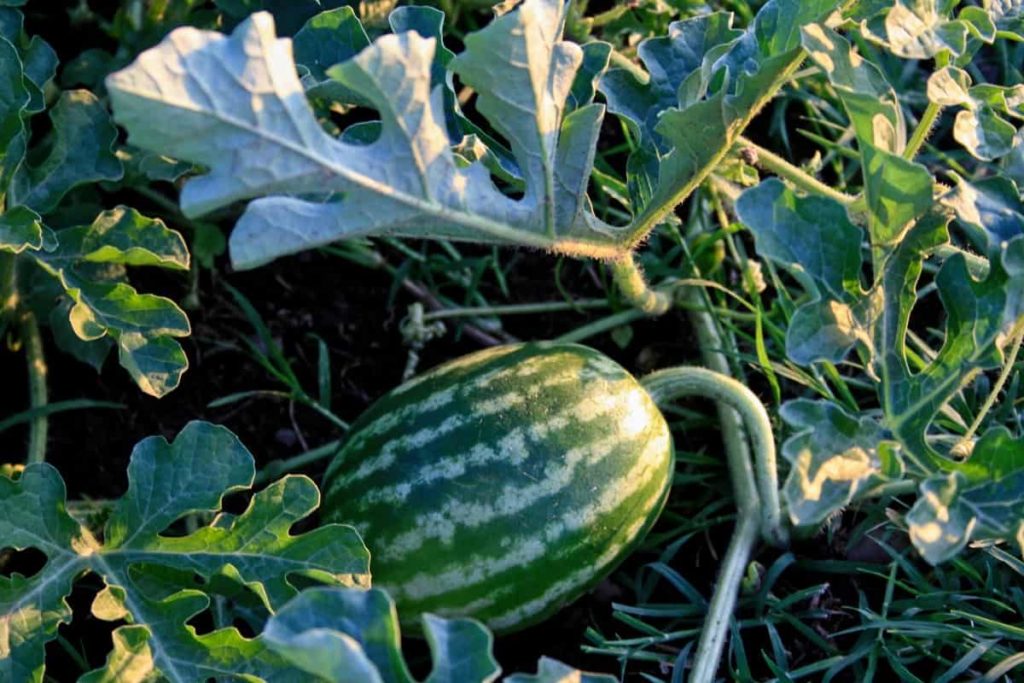
Top 20 steps to boost Watermelon yield
Step 1: Choose good quality varieties
Like many fruits, Watermelons come in various forms that affect the mature size. If you want large Watermelons, choose varieties designed to produce large fruits, such as ‘Crimson Sweet,’ ‘Royal Majesty,’ ‘Carolina Cross,’ or ‘Black Diamond.’ Some other important varieties are Aishwarya Watermelon, Anmol Yellow Watermelon, Apoorva Watermelon, Arun Watermelon, Dragon King Water Melon, Jaguar Watermelon F1, etc.
Step 2: Soil and light requirement for good yield
Watermelon requires full sunlight to thrive. Plants can tolerate some partial shade, especially in hot weather, but plenty of the sun is essential for the growth of sugar in melons. Excessive shading conditions will reduce the number and size of fruits. Watermelon requires extensive soil preparation before planting to be profitable and yields more. Watermelon is a warm-season crop grown mainly in subtropical and hot arid regions.
Watermelons are susceptible to cold, and even mild frosts can severely damage the crop and significantly reduce yields. If they are grown in winter, partial protection should be provided to protect them from any cold conditions. The Watermelon crop requires dry weather with full sunshine for standard Watermelon production.
In case you missed it: Organic Watermelon Farming, Growing Practices
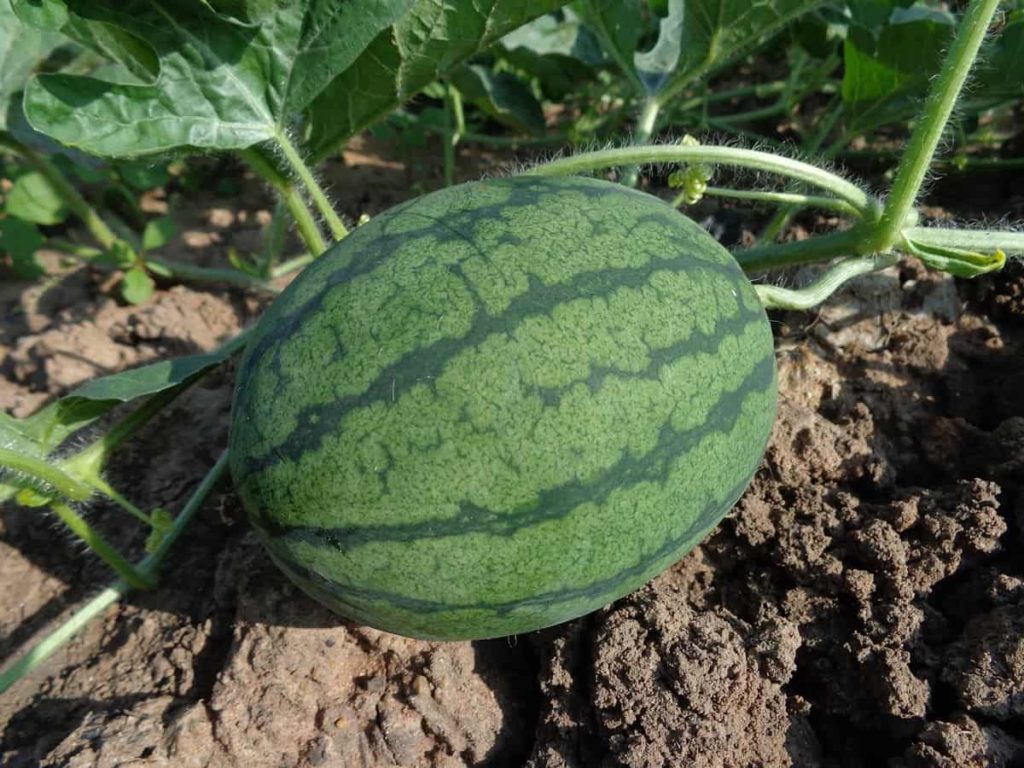
Step 3: Seed selection is the main factor for increasing Watermelon production
Seed selection in Watermelon cultivation plays an essential role in achieving proper fruit production and quality. Choosing the best quality seeds for growing healthy Watermelon plants is recommended. Watermelon seeds should belong to the appropriate high-yielding variety. Watermelon seeds should be fully ripe, well prepared, and thick in size. Watermelon seeds should be free from signs of aging or poor storage.
Watermelon seeds should be clean and free from a mixture of other seeds. Watermelon seeds need to germinate more to get higher yields. Before sowing Watermelon seeds in the field, they must be treated with fungicides so that the seeds can be protected from soil-borne diseases and Watermelon seeds can be strengthened.
Step 4: Plant spacing to make Watermelon plants grow faster
The plant space depends on the desired size of the melon. Large fruit melons are usually given 24 to 30 square feet per plant. It is common to see rows of Watermelons at a distance of 6 feet and with plants spaced 42 to 60 inches apart. Smaller melons that have become popular in the last few years can be spaced close together, such as 13 or 14 square feet per plant.
Different plant distances depend on the type and size of available equipment, water availability, and land availability. Soil fertility and cultural practices to control pests and diseases may need to be adjusted according to plant intervals. Growers need to determine the distance between their plants to get the best size, quality, and quantity of melons for their market.
Step 5: Production considerations for making good yield
Watermelons grow best on well-drained soils and have good air and water infiltration rates. Watermelons need constant moisture during the growing season. However, excess water at any time during the growth of the crop, especially when the fruit reaches maturity stage, can cause the fruit to crack, and it will reduce fruit quality and the yield of the crop.
In case you missed it: Watermelon Seed Germination, Time, Temperature, Process
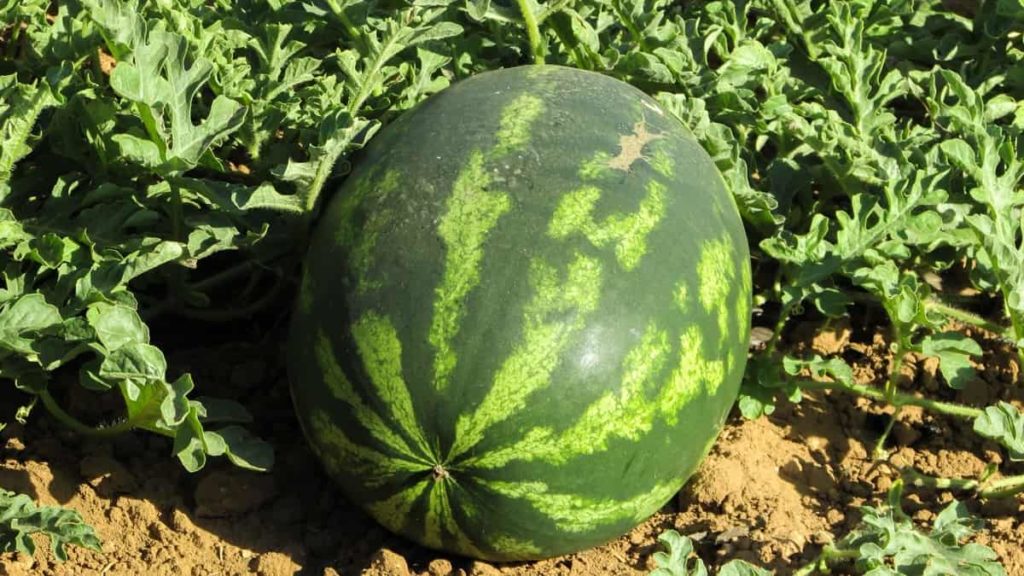
Step 6: Provide the proper nutrients for getting Watermelon plants to grow faster and with big fruits
Without adequate care during the growing season, your Watermelon is likely to grow slowly or be damaged by pests or diseases. To maximize the size of the melon, water the plants regularly in deep water sessions that keep the soil moist. Side dress the Watermelon plants with fertilizer prepared for edible crops or fertilizer tea to feed the plants.
Fertilizer encourages growth to produce large melons. Mulching around plants keeps the soil moist and reduces contact between melons and soil with potential disease pathogens. Keep an eye on insect symptoms, including aphids, spider mites, cucumber beetles, and squash bugs. Remove damaged leaves, pick insects, and spray with insecticide soap to control pests.
Step 7: Tips and tricks to help you avoid flower drop in Watermelon
In some cases, it is normal for flowers to drop on plants. For example, male flowers naturally fall off plants after a few days. These first flowering females are produced to pollinate the flowers, usually within the next 10 to 14 days. Therefore, when they drop, it is normal for the Watermelon to lose its flowers in the beginning. The female flowers stay on the vine for pollination and eventually become melons. Here are some tips and tricks to help you avoid Watermelon blossom drops. These include;
- Pollinate the female flowers – Do this with a male flower, remove the flower petals and use the stamen to contact the pistil inside the female flower. Brush and shake the pollen to get the pistol on the substance. You can also use a small paintbrush to apply pollen to melon plants by hand.
- Use only high-quality transplants to start your Watermelon plants – if possible, grow disease-resistant varieties.
In case you missed it: Watermelon Profits, Yield Per Acre, Growth Stages
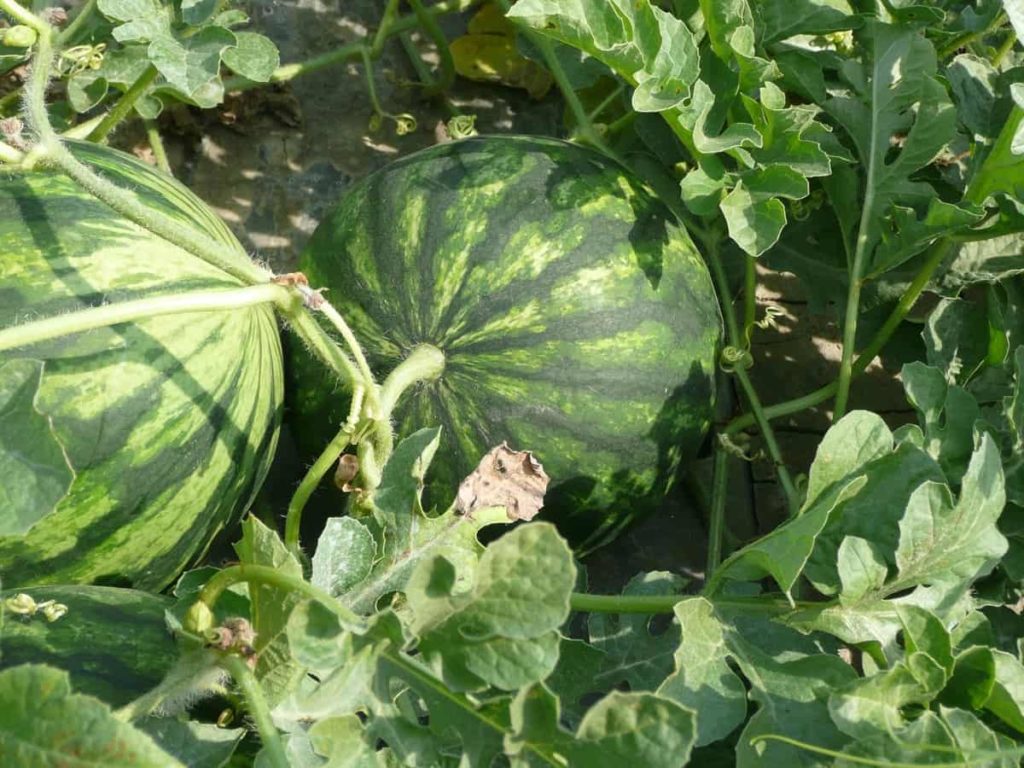
Step 8: Get sweet Watermelons
To get the right amount of sugar, you need to keep the Watermelon plants happy in all seasons with the right amount of water, protection from diseases and pests, and adding extra nutrients soil. Especially the cold growing season can affect the quality of Watermelon.
Step 9: The best fertilizer for encouraging fruit set
Use nitrogen-based fertilizer from the beginning when fertilizing Watermelon plants. It requires potassium and phosphorus to produce maximum Watermelon. Encourage fruit production by fertilizing female flowers, which are more significant than males and have smaller fruits. Remove the male flower from the Watermelon plant and swipe it on the open female flower to encourage the number of fruits. The use of suitable fertilizers in Watermelon production improves fruit production and quality. Nitrogen also increases the leaves growth and twigs over time, the number of leaves, and the weight of the plant.
Phosphorus is essential in the transfer of energy to the plant. It also plays a role in improving the quality of the crop. On the other hand, organic fertilizers like cattle manure have been shown to enhance the growth and development of Watermelon plants. If you choose to use chemical fertilizers, apply a fertilizer that contains more nitrogen than phosphorus and potassium, promoting leaf and vine growth. But after flowering begins, fertilize a second time with a low nitrogen fertilizer that encourages flower and fruit growth.
Step 10: Increase the size of the Watermelon fruit
- Root damage – Interruption of Watermelon growth can result from damage during transplanting. You may have caused irreparable damage to the roots, and they may not be able to get enough nutrients for further development. Planting around the plant can also damage the roots, affecting the size of the fruit.
- Location – Watermelons planted in the wrong soil can also slow their growth. They like sandy looms modified with organic matter and fine sand. Heavy soil is a disaster for growing Watermelons.
- To maximize the size of the melon, water the plants regularly in deep water sessions that keep the soil moist.
Step 11: Pollination in Watermelon farming helps them attain large fruits
This is a critical stage in Watermelon cultivation. Unlike other crops, Watermelon plants do not flower on their own. In Watermelon, male flowers are smaller and appear first, while female flowers are larger and appear later. The female is a small fruit based on flowers. If it shrivels, it means there will be no pollen. In nature, bees carry pollen from flower to flower. Therefore, it is good to have an artificial bee in the Watermelon field. One hive per acre of the area is more than enough. Some growers pinch the tip of a branch after it has borne fruit. It helps them to get bigger fruits.
Step 12: Tips for growing large Watermelons
Watermelon is a classic summer fruit that grows best in hot climates. Improper watering, pests, and diseases often stop Watermelon growth, preventing them from becoming large, sweet melons. Melons can also be damaged by rotting before they reach their maximum size. Irrigation to create flavor and sweetness in the fruit.
Watering the plants with drip irrigation ensures optimal growth and productivity of the plants and allows the farmers to apply fertilizer in the growing season. As the fruit approaches maturity, the irrigation frequency decreases, stopping it altogether during the harvesting phase. It helps in creating flavor and sweetness in the fruit.
Step 13: Gap filling and thinning for better fruit production
Watermelon seeds usually start germinating 7 to 10 days after sowing. Keep 1 or 2 healthy plants for each pit and remove the rest.
In case you missed it: Watermelon Farming, Cultivation Information Guide
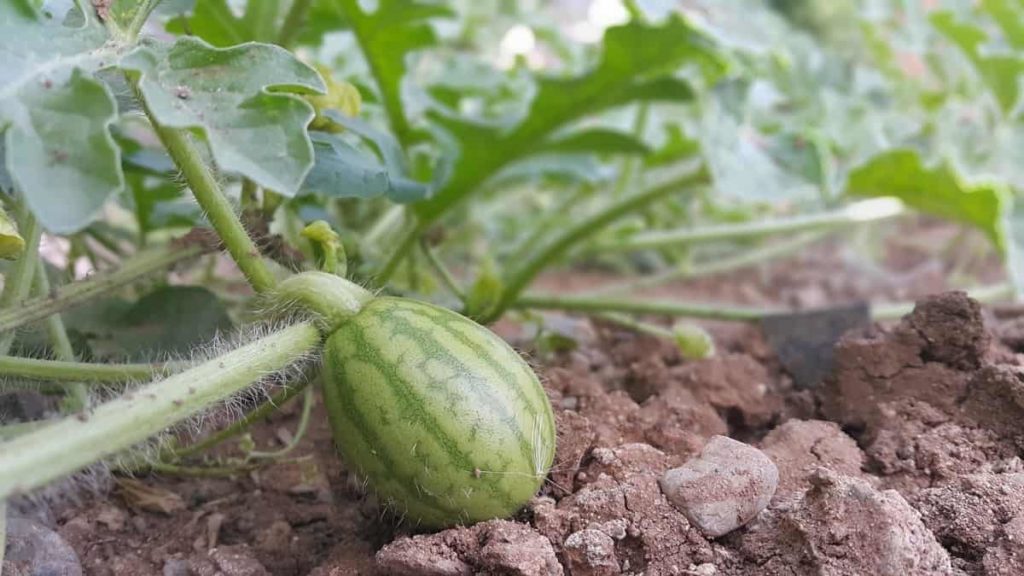
Step 14: Pinching for better fruit yield
In the Watermelon plant when the vines reach a height of about 1 meter and allow the side shoots to grow, pinch the apical shoots. This type of exercise will result in higher crop yields. During the early stages of the fruit set, diseased, spoiled fruit should be removed. Try to place 2 to 3 fruits on each plant or vine for better fruit size and yield.
Step 15: Weed control in Watermelon cultivation
Weeding is required in the early stages of Watermelon growth. Due to the presence of vines, herbicides should be used very carefully; otherwise, healthy plants may be affected. Though, the first weeding is done about 25 days after sowing. It is followed by a weeding once a month. Once the vines begin to spread, there is no need to weed because the vines take care of the weeds.
Step 16: Crop rotation with Watermelon
Due to the risk of developing various diseases, Watermelon is grown on the same land only for three years. It is usually mixed with rice or vegetables like Tomatoes, Peppers, etc.
Step 17: Tips for growing Watermelon fast
Once you have a set of Watermelons, prune off all the other fruits. It will enable the plant to put all its energy and nutrients into a healthy plant, which will make it grow bigger and faster. You will probably plant more than one seed to get one big fruit from each plant.
Step 18: Cow dung is good for Watermelon
Cattle manure and inorganic fertilizers improve the quality of Watermelon fruits and enable small Watermelon growers to maximize their net returns and profits.
Step 19: Pests and diseases control affect the crop yield
Periodically examining melon patches for signs of disease or insect damage will allow you to resolve their problems before the Watermelon spreads. Leaf damage is one of the most common diseases and pest infestation symptoms. The best way to avoid pests and diseases is to keep the plants healthy and growing fast. Chemical pesticides also kill pollinators, and low fruit set can lead to poor yields. Use disease-free seeds. Do not overcrowd the plants.
In case you missed it: Earning 3 Lakh Per Month from Organic Farming: A Success Story of an Agriculture Farmer
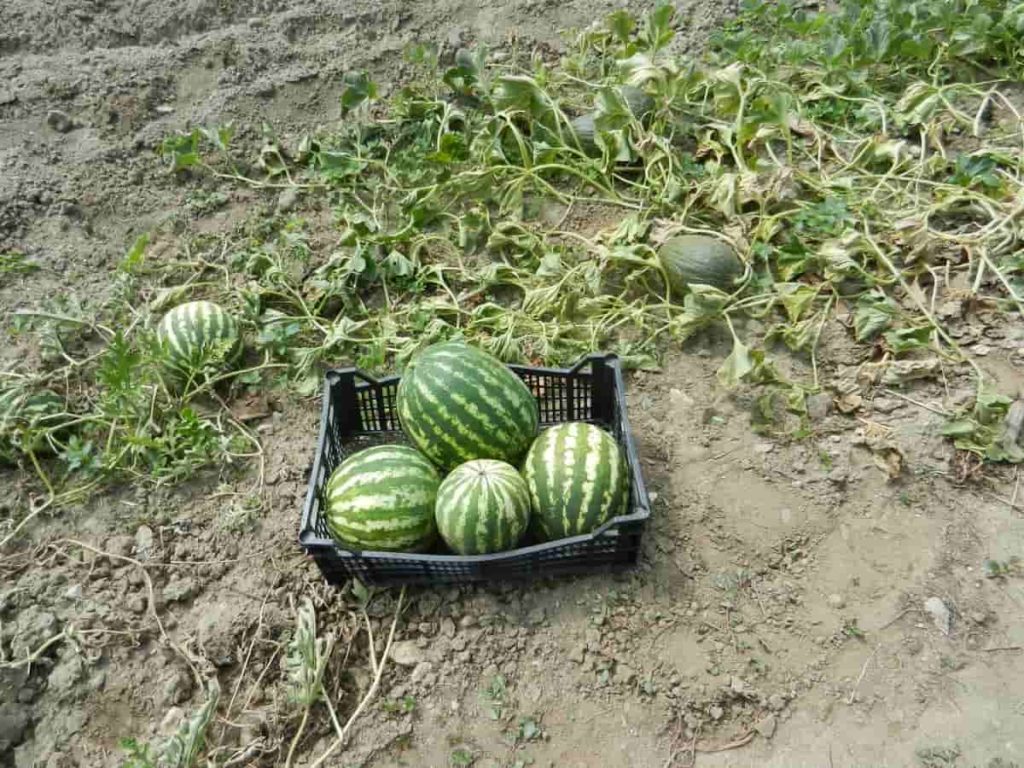
Disease-resistant varieties are available for many diseases like anthracnose and Fusarium wilt for extinguishing and should be applied. Frequent applications of sprinkler irrigation with a small amount of water are conducive to the spread and development of many diseases. Drip irrigation helps reduce disease because drip systems do not wet plants, a condition that favors infection. Drip irrigation also reduces the spread of plant pathogens transmitted by splashing water or runoff.
Step 20: Harvesting time is important for crop growth
This stage of development is ready for Watermelon harvesting. It means that the Watermelon is quite ripe. Now you can get it when the Watermelon fruit is hard. It will also help if you find the color. The color of a ripe Watermelon fruit should be green to dark green, indicating its maturity. Watermelon is cut by hand at full maturity for the best taste and texture. After harvesting, growers should check the size, maturity, and pest damage of Watermelon to ensure the marketing of high-quality products.
- Types of Pesticides Used in Agriculture: A Beginner’s Guide
- Economical Aquaculture: A Guide to Low-Budget Fish Farming
- 15 Common Planting Errors That Can Doom Your Fruit Trees
- How to Make Houseplants Bushy: Effective Tips and Ideas
- Innovative Strategies for Boosting Coconut Pollination and Yield
- Pollination Strategies for Maximum Pumpkin Yield
- The Complete Guide to Chicken Fattening: Strategies for Maximum Growth
- Natural Solutions for Tulip Problems: 100% Effective Remedies for Leaf and Bulb-Related Issues
- Revolutionizing Citrus Preservation: Towards a Healthier, Greener Future
- Natural Solutions for Peony Leaf and Flower Problems: 100% Effective Remedies
- Maximizing Profits with Avocado Contract Farming in India: A Comprehensive Guide
- Natural Solutions for Hydrangea Problems: 100% Effective Remedies for Leaf and Flowers
- The Ultimate Guide to Choosing the Perfect Foliage Friend: Bringing Life Indoors
- From Sunlight to Sustainability: 15 Ways to Use Solar Technology in Agriculture
- The Ultimate Guide to Dong Tao Chicken: Exploring from History to Raising
- The Eco-Friendly Makeover: How to Convert Your Unused Swimming Pool into a Fish Pond
- Mastering the Art of Delaware Chicken Farming: Essentials for Healthy Backyard Flocks
- 20 Best Homemade Fertilizers for Money Plant: DIY Recipes and Application Methods
- How to Craft a Comprehensive Free-Range Chicken Farming Business Plan
- Brighten Your Flock: Raising Easter Egger Chickens for Beauty and Bounty
- How to Optimize Your Poultry Egg Farm Business Plan with These Strategies
- Subsidy for Spirulina Cultivation: How Indian Government Schemes Encouraging Spirulina Farmers
- Ultimate Guide to Raising Dominique Chickens: Breeding, Feeding, Egg-Production, and Care
- Mastering the Art of Raising Jersey Giant Chickens: Care, Feeding, and More
- Ultimate Guide to Raising Legbar Chickens: Breeding, Farming Practices, Diet, Egg-Production
- How to Raise Welsummer Chickens: A Comprehensive Guide for Beginners
- How to Protect Indoor Plants in Winter: A Comprehensive Guide
- Ultimate Guide to Grow Bag Gardening: Tips, Tricks, and Planting Ideas for Urban Gardeners
- Guide to Lotus Cultivation: How to Propagate, Plant, Grow, Care, Cost, and Profit
- Agriculture Drone Subsidy Scheme: Government Kisan Subsidy, License, and How to Apply Online
- Ultimate Guide to Raising Araucana Chickens: Breed Profile, Farming Economics, Diet, and Care
- Bringing Hydroponics to Classroom: Importance, Benefits of Learning for School Students
- Ultimate Guide to Raising Polish Chickens: Breed Profile, Farming Economics, Diet, and Care
- Ultimate Guide to Raising Australorp Chickens: Profile, Farming Economics, Egg Production, Diet, and Care
- Silkie Chicken Farming: Raising Practices, Varieties, Egg Production, Diet, and Care
- Sussex Chicken Farming: Raising Practices, Varieties, Egg Production, Diet and Care
Nice